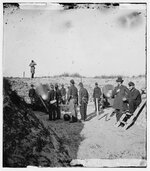Mahfeitsurt Walcolliday
Newbie
I recently found this in a dry creek bed near the Sumter, Clarendon county line in Rimini S.C. it was almost entirely buried and the bottom portion of it was already damaged badly like it was unwrapping almost. I managed to salvage a little over half of it as I dug it out of the sand and clay. Could someone please tell me if this is a real cannonball. I measured it right at 10 inches in diameter.





